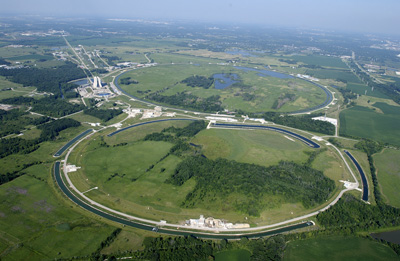Tevatron Operation

The Cockcroft Walton accelerates negative hydrogen ions to 740 kilo electron volts (KeV). The negative ions are then accelerated down the LINAC to 400 MeV. The particles enter the booster where the electrons are stripped off, leaving the protons. In the Booster, the protons are then accelerated to 8 GeV. Once the protons enter the Main Injector, they are accelerated to 150 GeV. From here, the protons are injected into the Tevatron. The Tevatron, which was the world’s highest-energy particle accelerator until 2009, accelerates protons and antiprotons to nearly 1 TeV.
All about antimatter
Fermilab makes antiprotons by smashing protons against a nickel target. The Antiproton Source in Fermilab’s accelerator complex makes about 20 antiprotons for every 100 million protons they smash on the target. Fermilab then collects the antiprotons in the accumulator, one of the complex’s 10 accelerators. The antiprotons are transferred over to the Recycler ring and then cooled. Cooling the antiprotons makes them easier to manipulate and accelerate and increase the rate of collisions.
- Last modified
- 05/06/2014
- email Fermilab

